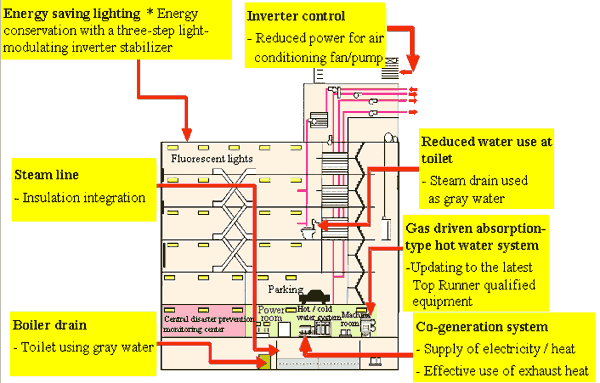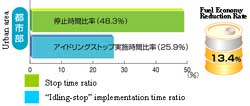II-2. Energy
Conservation Measures for the Commercial/Residential
Sector
Support for the Introduction of ESCO Business
Support for the Introduction of ESCO Business
| - Support, in the forms
of partial subsidy for initial investments,
low-interest loans, etc., is extended
to private enterprises and local governments
implementing the ESCO business. - A model ESCO project will be introduced also at a national facility, i.e. METI building from FY2004 onwards. |
Example
of ESCO business introduction (at a
hospital) |

| Energy conservation
effect by the introduction of ESCO: Approx. 25% |





